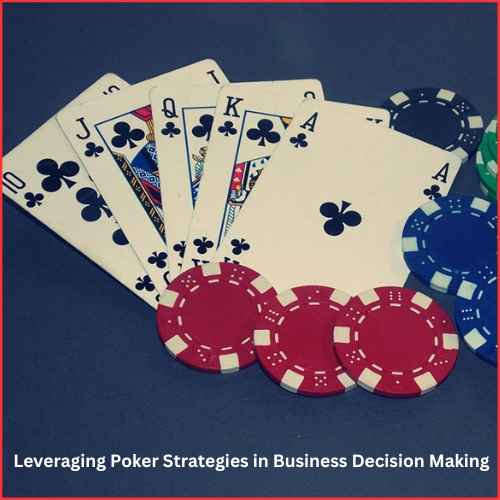In today’s fast-changing world, FinTech (financial technology) is more than just a trendy term—it’s transforming the game. As traditional banking encounters new challenges, FinTech is changing the way we handle, transfer, and invest money.
This comprehensive guide explores the FinTech revolution, its impact on traditional banking, and what the future holds for financial services.
| Table of Contents |
| Understanding fintech disruption |
| Traditional Banking vs. FinTech: A Comparative Analysis |
| How FinTech is Transforming Banking Services |
| Key FinTech Innovations Driving Change |
| The Future of Banking: Will FinTech Replace Traditional Banks? |
| Building a FinTech Startup: Opportunities and Challenges |
| Conclusion |
Understanding fintech disruption
FinTech disruption means a big change in banking from old ways to new, tech-based ones. It’s more than just digital banking. FinTech companies are making new financial systems. They offer services like stock trading and crypto investments that old banks don’t do.
FinTech has brought some big trends:
- Blockchain for safe and clear transactions
- Strong cybersecurity to fight digital threats
- Neobanks with full banking services but no branches
- Platforms making stock and crypto markets more open
Understanding the FinTech revolution is key. It’s important to see how it’s different from traditional banking.
Traditional Banking vs. FinTech: A Comparative Analysis
Let’s look at FinTech and traditional banking side by side.
key areas:
1. Technology Approach
- Traditional Banking: Uses tech to improve existing services.
- FinTech: Uses tech to solve financial problems.
2. Service Scope
- Traditional Banking: Offers many banking services, like loans and investments.
- FinTech: Focuses on specific services, like lending apps or savings platforms.
3. Cost Structure
- Traditional Banking: Has high costs, needing $12 million to $20 million to start.
- FinTech: Has lower costs, needing $50,000 to $300,000 for app development.
4. Customer Experience
- Traditional Banking: Can be slow to adopt new, customer-focused ideas.
- FinTech: Focuses on making things easy and personal for users.
5. Regulatory Environment
- Traditional Banking: Works under clear rules.
- FinTech: deals with changing and complex rules, pushing for new standards.
This comparison shows why FinTech is popular with both consumers and businesses. Now, let’s see how these differences change banking services.
How FinTech is Transforming Banking Services
FinTech affects banking in all fronts since it is an all round solution to financial services.
Here are the key areas where FinTech is driving significant change:
1. Increased Value Proposition
It has also been correctly pointed out that FinTech innovations are radically transforming the value that banks deliver to customers. For instance:
Mobile payment gateways have broken understandings of online as well as face-to-face transactions.
Mobile applications of banks include all the features of several applications in one place for banking.
Robo-advisors, which are powered by artificial intelligence, provide customized investment recommendations at a considerably lower cost.
In particular, more than 60% of bankers agree that the participants of FinTech contribute great value to banking.
2. Enhanced customer-centric experiences
FinTech companies are setting new standards for customer experience in financial services.
Customized service provided by intelligent application and using information systems and big data processing.
Banks that have had to make banking services easily accessible as they caused disruption even through mobile apps.
Simplified procedures for opening accounts and loan applications, among others.
For instance, Revolut, a FinTech company that takes care of customers’ needs, expanded its base of clients from 150,000 to more than 8,000,000 in a few years.
3. Specific Nature and Approaches of Branding and Marketing.
FinTech firms are redefining how financial services are marketed.
Employing brand cues or branded language (e.g., “Venmo me”).
Engagement and retention of customers through adaptation and implementation of financial elements in the provision of financial services.
Product recommendation and promotional strategies with the help of user-specific characteristics and his behavior.
These strategies are proving quite effective in building better brand images as well as customer loyalty for FinTech enterprises.
Key FinTech Innovations Driving Change
A number of revolutionary technologies are driving the FinTech revolution at the moment.
Let’s explore three of the most impactful:
1. Chatbots and Virtual Assistants
AI-powered chatbots are transforming customer service in finance:
24/7 customer support
Personalized financial advice
Automated transaction processing
Some of them include the Bank of America’s Erica and Capital One’s Eno, which deal with many interactions from customers with a lot of ease.
2. Alternative Credit Scoring Models
FinTech is revolutionizing how creditworthiness is assessed.
Leads assessment by non-conventional demographic parameters (e.g., payments for utilities, social networks).
It helps to provide credit to the scarcely financially included people.
Reduces likelihood of risk as compared to what lenders are able to perceive without the usage of credit scores
3. Frictionless Payment Solutions
Modern payment gateways are streamlining transactions for both consumers and businesses.
- One-click purchases
- Biometric authentication
Purchases and sales across national borders and within reasonable charges
Some of the firms that are currently recognized for changing the way people pay and get paid include PayPal, Stripe, and Square.
The Future of Banking: Will FinTech Companies Soon Replace The Traditional Banks?
As FinTech continues to evolve, a pressing question emerges: contemplating the advancements in these directions, they will be able to answer the following question: will these innovations replace traditional banks at some point in the future?
While it’s difficult to predict the future with certainty, several trends suggest a significant shift in the banking landscape:
Growing Trust in Neobanks: The consumer use of neobanks also rose from 17% in 2018 to 23% in 2020, which shows more people are trusting the digital players only.
Rapid Adoption of Mobile Banking: In recent years, the majority of payment services offered have been mobile banking enabled, and FinTech serves as the bridge in cross-border transactions.
Efficiency Gains: In financial institutions, robotic process automation achieves a return on investment in the range of 100% within 3 to 8 months, hence its fast-growing adoption.
Market Growth: The FinTech sector is expanding significantly and at the compound annual growth rate of 26 percent. 87% are in the current year, which is way above the growth rate of less than 10% in traditional finance.
User Adoption: American FinTech consumers rose from 58% in 2020 to 88% in 2021; thus, the FinTech market is mainstream.
These trends, therefore, indicate that even though information technology will not make traditional banks redundant all together, the BPS will have to evolve greatly in order to remain relevant. The future of banking is likely to be a mix of traditional banking methods combined with new ideas from the fintech industry.
Building a FinTech Startup: Perspectives: Pros and Cons
We have an account to discuss how the FinTech revolution is beneficial to entrepreneurs and investors. However, launching a FinTech startup comes with its own unique set of challenges:
Opportunities:
Large Addressable Market: Currently, there are millions of users who remain underserved, and there is still much potential on the global market.
Technological Advancements: Artificial intelligence, blockchain, and big data analytics suggest new modes of addressing financial issues.
Changing Consumer Preferences: The youth is more accepting of innovation-based financial services.
Challenges:
Regulatory Compliance: International business transactions and cross-border commerce and the significant compliance issues arising from the numerous and multifaceted rules governing global finance.
Building Trust: Persuading the users to take their financial matters and their future financial management in the hands of this new entity.
Competition: The struggle of differentiation in today’s world that is full of similar service businesses.
Cybersecurity: Keeping the financial information safeguarded from various threats that are constant in evolution.
For a startup in this space to be successful, it needs to consider the following constant factors: It has to be solving real customer pain; it has to be secure and compliant; and the solution has to offer a clear advantage over every traditional banking service it is replacing.
Conclusion:
The impact of FinTech and shift the focus to the steps that need to be taken in order to adapt to it.
But the future of banking is not just shifting away from traditional players and towards newcomers with a FinTech label; it is shifting the very tango between humans and money. These include financial advisory services, smart contracts ranging from machine learning, artificial intelligence, and blockchain, among others, which are enhancing the delivery as well as efficiency of the financial services than was previously witnessed.
Therefore, the nature of banking as it is currently being practiced and what is being defined as FinTech firms today are likely to converge even more in the future. Good old century-long financial institutions and new-aged financial technology companies will be the ones who can flourish in this environment—those that can further harness technology to deliver new forms of financial services that are needed but safe and secure.
As a result, for consumers, businesses, and investors, this willingness to accept and embrace change, along with understanding what new trends are occurring in the FinTech space, will be critical in this brave new world of the financial market.
This is the era of FinTech, and it’s disrupting the banking industry in ways that are barely imaginable.















